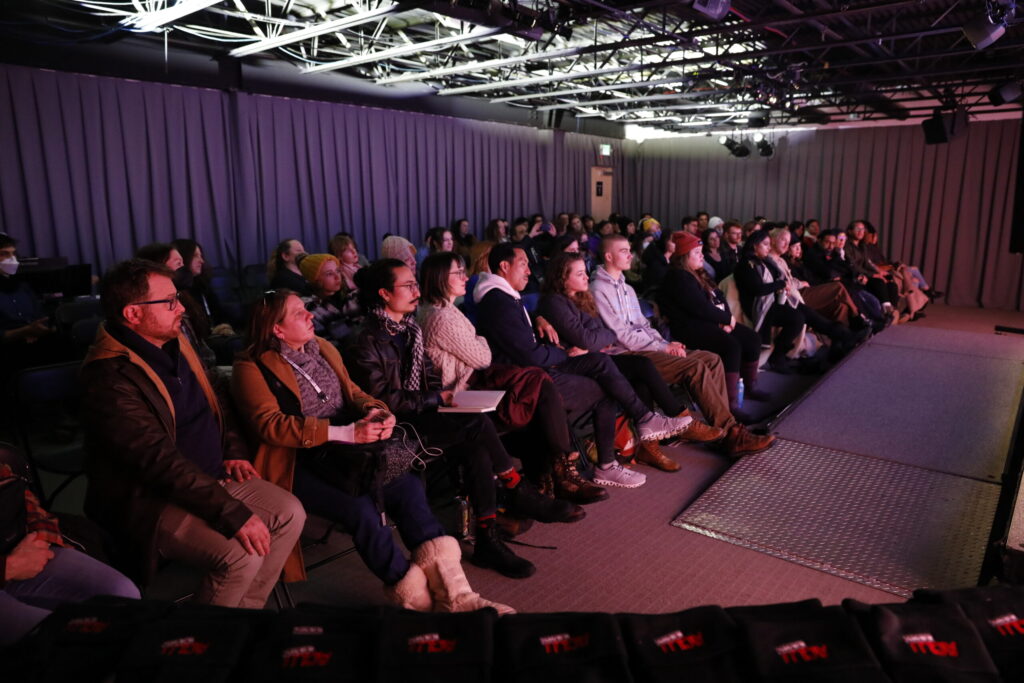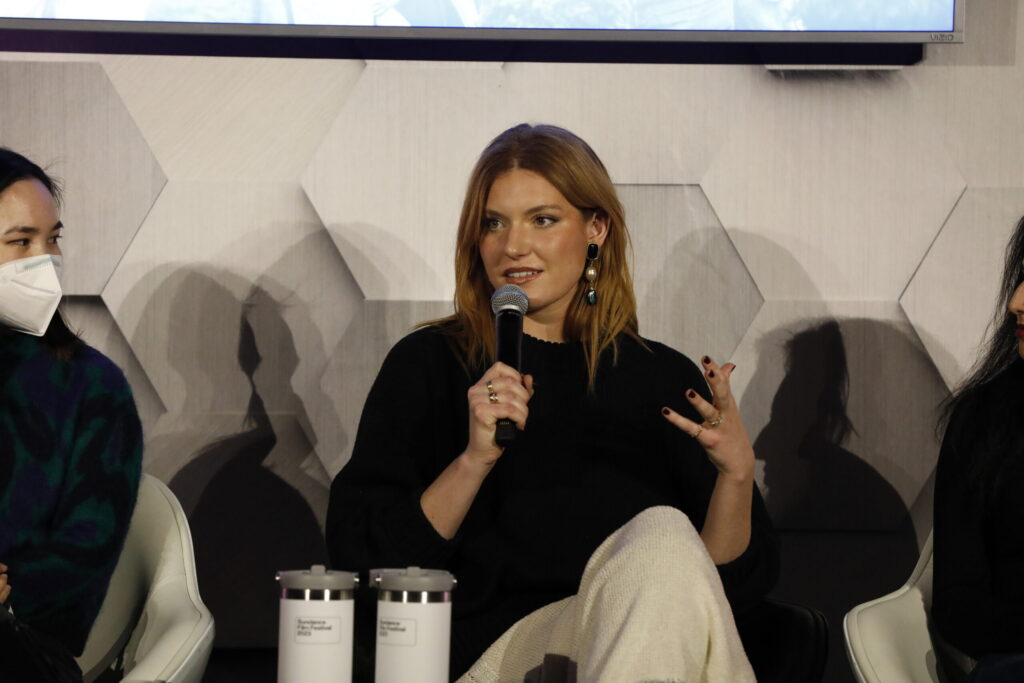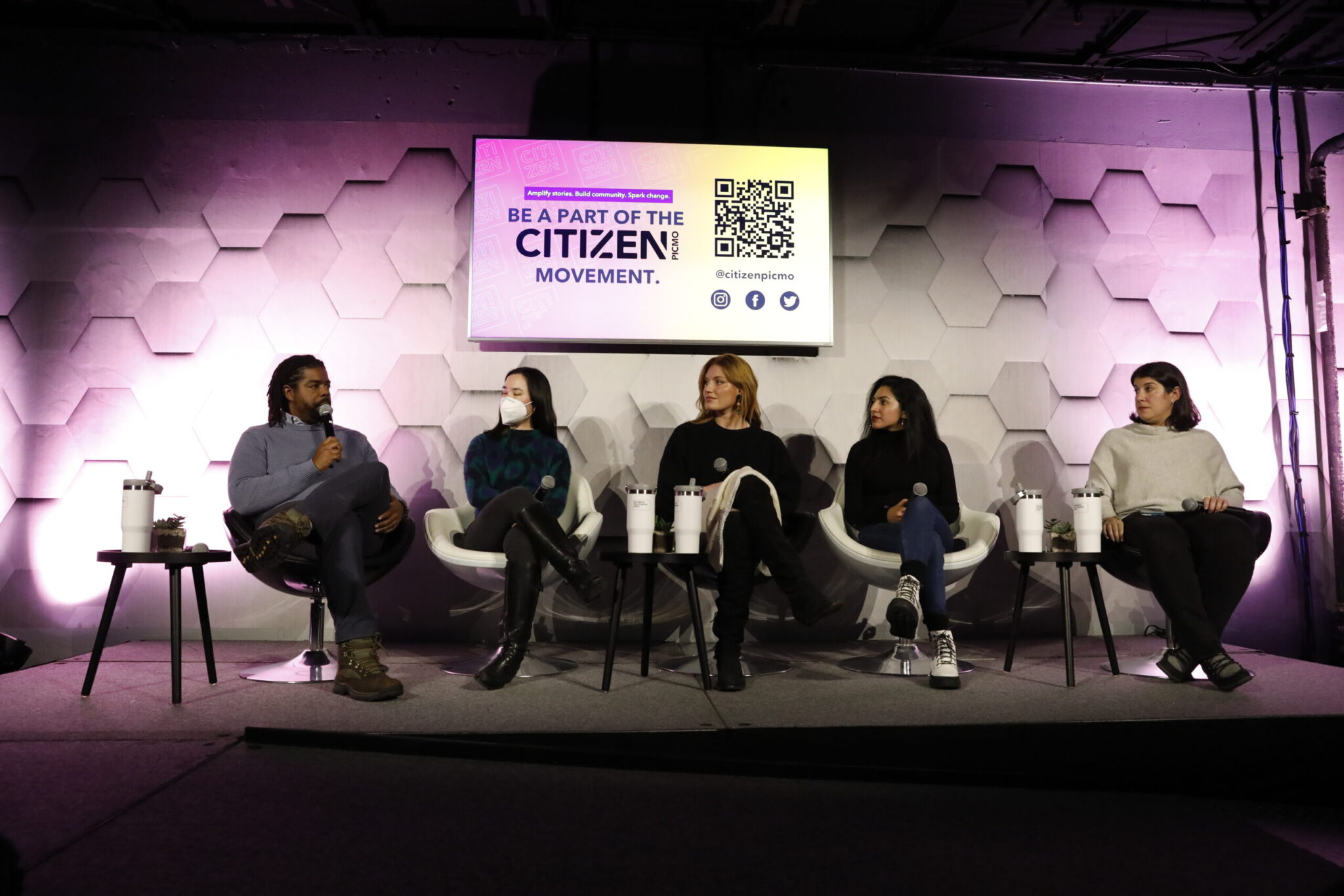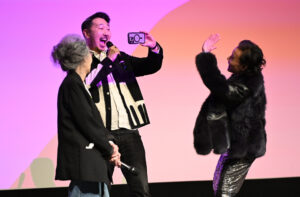By Katie Small
Filmmakers and social organizers crowded into the Box at The Ray on Friday afternoon for ACLU’s “Cinema for Change: How to Use Film to Make an Impact.” The panel featured Namoi Funabashi, head of film and television at Hillman Grad; Jess Jacobs, executive producer and impact producer for Plan C (premiering Monday, January 23 at the Sundance Film Festival); Brian Walker, CEO of Picture Motion; Eva Lopez, ACLU creative campaign strategist; and moderator Lauren Weiner, ACLU director of media and strategic engagement.
The group discussed the various ways that filmmakers, producers, marketing teams, and creatives have the power to educate, inspire, and activate audiences on social justice issues. The interactive conversation focused on concrete steps for social impact campaigns, and the tools and resources needed to make a difference through film.
“I think every single piece of audio/visual content has an impact,” said Jacobs. “Is the impact progressive, regressive, or sort of reaffirming of the status quo? To me, there’s an opportunity with every film and television show to spark a conversation, to change the way in which we think about ourselves, the way we think about other people.”
Panelists agreed that understanding your goals and having measurable objectives is key to any successful social impact campaign, as well as reaching as many audiences as possible and using all the tools at your disposal.
“With Plan C, at the end of the film we expect that our audiences will feel inspired and excited, and having an impact campaign surrounding the film gives them a place to put that energy, gives them the tools to say something.” continues Jacobs. She also stressed the importance of representation, and how that can create a space for community, “When I had my abortion, no one was talking about abortion access, it was a very isolating experience, and it inspired me to make Plan C, so that I could find that community and so that others could too. Seeing these stories told authentically onscreen is something that changes our lives and culture in a massive way.”
The conversation covered the importance of accountability, cultural sensitivity, and working with and within the communities represented to ensure that their voices are accurately and authentically represented.
Walker got into the specifics of how his organization works with filmmakers to craft social impact campaigns. “For documentaries, a lot of times the subject is very myopic – you have one character very specific to one community, and the filmmakers are very embedded with that particular kind of small segment, and so a lot of times when filmmakers come to us at Picture Motion, they’re coming during the post-production stage, or pre-distribution stage, and they’re starting to think about [developing] a social impact campaign, and one of the things we try to tell them is, ‘there’s an ecosystem of potential stakeholders and partners connected to this project, and what we want to do is start having those conversations with those partners to develop brain trusts,” he explains. “Roundtable conversations with the people impacted by a particular issue, a policymaker, or even another storyteller [are important to this process], because we’re thinking about, ‘What are the downstream ways that this story might turn into something else?’”
Pointing viewers to petitions is one of many ways that filmmakers can use integrated actions to create a communications and social impact campaign. Following up and measuring which actions work will help to show where audiences are engaged. “Art changes culture and the law and policy codifies that change,” adds Lopez. “It’s not easy to measure the impact of qualitative cultural elements, but you see their effects later down the road.”
The conversation wrapped up with an audience Q&A that solidified connections among attendees. Future filmmakers in attendance asked specific questions relating to their projects, including a documentary on traumatic head injuries that seeks to change discourse and public policy to financially support survivors. Weiner offered to connect the filmmakers to a group of disability rights researchers, and a fellow audience member stood up to offer to connect the filmmakers with an activist who also works in the disability rights field. Attendees slowly filtered out of The Box as new collaborators connected and chatted, buzzing with inspiration and motivation.









